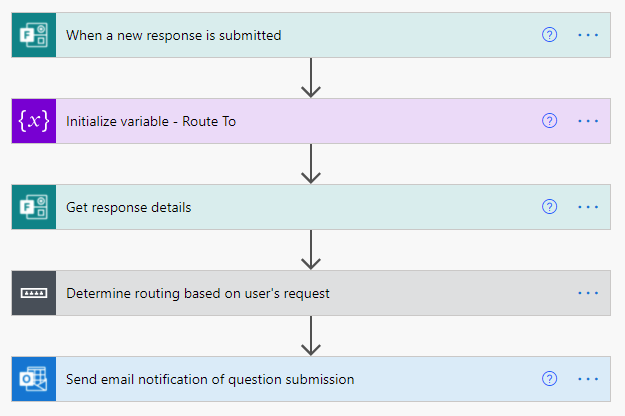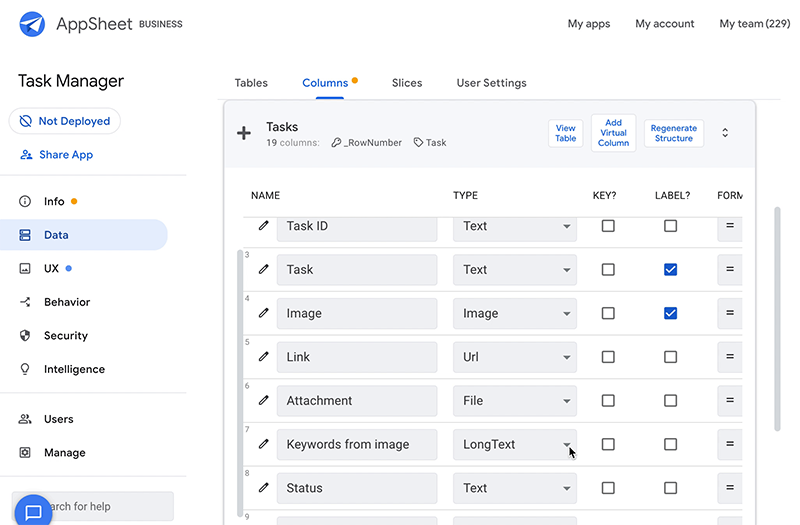No-Code, Low-Code, Pro-Code
The future of software development no longer consists of strictly labor-intensive conventional coding. Simpler methods of building software have been emerging into the spotlight and picking up steam. The addition of no-/low-code software development has created a spectrum of options which offer more variety (and power) in tools that can be used to drive efficiency and meet the needs of your users.
The big question now is this: Which level of code is best for the needs of your application?
What Is “No-Code”?
Essentially, no-code development is a form of declarative programming in which applications are created using drag-and-drop user interfaces as opposed to hand coding. This approach is intended for speed and efficiency where extensive and intricate coding is not necessary; simple, repetitive applications based on common use patterns can be created very effectively with typical no-code platforms.
This is the primary reason for the rise of no-code development: reaching the desired destination as simply as possible. If you were able to travel the gravel path instead of the one littered with growth and wildlife, you’d choose the gravel to get to where you were going – that’s exactly what no-code developers are doing.
Where Do Organizations Use No-code Development?
No-code development, like most things, is only useful when it is applied to the right situation. You wouldn’t use a fork to open a can and likewise, use of no-code tools for highly specialized software needed to meet huge scale is not a winning approach.
No-code is typically best suited for straightforward and conventional solutions that follow highly common uses cases. It is often used to help knowledge workers who aren’t schooled or fluent with formal programming languages but are highly analytical and need to develop an application for a specific use. Even when full professional software developers are available within an organization, the business may opt to save money by avoiding use of a full programing team to build their application.
A prime example of “citizen developers” using no-code is the use of Microsoft Forms to create a survey and a simple Power Automate Flow to route form submissions based on simple logic. Neither no-code element uses traditional time-consuming coding, just simple drag and drop software to achieve the business need.

Google gets in the no-code game with AppSheet, a no-code development platform that allows users to create mobile, tablet and web applications. It can be employed for a range of business cases including project management, customer relationship management, field inspections and personalized reporting.

Popular Platforms
While once a niche, there are now a plethora of no-code platforms. The following are a collection of leaders in the space:
- OutSystems: A low-code platform which provides the tools for companies to develop, deploy and manage omnichannel enterprise applications.
- Airtable: A spreadsheet-database hybrid for building collaborative apps, highly flexible and chock full of popular integrations.
- Microsoft Power Platform: Empowers knowledge workers to easily build apps that leverage a large selection of connectors including Microsoft Office cloud ecosystem.
- Appian: A cloud computing and enterprise software company that sells a platform as a service for business process management and case management.
- BettyBlocks: A platform for users to develop their own web applications and a laser focus on the citizen developer.
Pros of “No-Code”
No-code is being used where traditional software development used to be and has become a popular method of software development for several reasons:
- Reduced Cost: Using no-code, users can bypass the expense of a team of developers
- Increased Productivity: With no-code, apps are built at a much faster pace, which means less people waiting for work to be done
- Simple to Change: With professional coding you can’t independently change a software feature; with no-code you can simply implement new logic and be done in a matter of hours
Cons of “No-Code”
Though no-code is often more efficient and much simpler than traditional software development, it also has it’s weaknesses:
- Pre-Defined Templates: No-code platforms offer a range of templates to their users but barring professional immersion, this can limit the boundaries of your application
- Security Issues: Control over your application is now shared between knowledge workers and the no-code providers; lack of enterprise compliance is lost and can lead to security risk
- Clear Understanding of Requirements: As each no-code platform comes with a unique set of limitations, users must determine if their needs fit the constraints of the particular tool
Low-Code Software Development
No-code is not the only option when it comes to simpler and more efficient software development. Low-code software development reduces cost as well as development time span but keep in mind: low-code raises the price of entry.
What Is “Low-Code”?
Low-code platforms, like no-code platforms, also use a graphical interface for building an application but opens up possibilities for “light” coding additions. Since low-code approaches require minimal hand coding, developers can focus on creating the 10% that makes their application different while leaving the standard pieces to no-code-like packaged pieces. Saving time and money, while also providing the power to tailor to your requirements, low-code may be best method for your application.
Low-Code vs. No-Code
Though they may be similar in regard to their efficiency, graphical interfaces and minimal hand-coding, low-code and no-code are not the same. Low-code allows greater customization and is superior for developing standalone mobile and web applications; no-code is generally superior for use-cases that extend systems that the user already touches and sees, such as a new screen within an intranet or CRM system.
Unlike no-code, low-code still requires some knowledge of coding so IT departments need to ensure that they can trust that those developing their applications will do so properly. Creators of low-code solutions are more likely to have somewhat of a background in programming and thus will be able to use the platforms to develop software that is a bit more critical to a business’s core functions.
Pro-Code Software Development
All the way at the other end of the spectrum we have professional, or “pro-code”, software development. As the conventional professional form of software development form, it is very different in nature and complexity than no/low code. Pro-code costs more and is typically much more time consuming than the lower-code approaches, but it provides an incredibly higher level of customization, security and scale.
As a custom software development agency we are definitely very “pro” on “pro-code” (you can learn more here) but there are solidly many cases where we recommend or implement lower-code solutions for clients. No-/low-code has become so popular and useful because professional developers are in very high demand.
Where Is “Pro-Code” Essential?
Pro-code is superior to no-/low-code with its strength in handling complex workflows and becomes essential when developing systems that literally power a company’s operations and/or require massive scale. As an example, use of pro-code is essential to power complicated pricing computations, track vast quantities and varieties of products and perform real-time routing and fulfillment of orders to an assortment of customers. While no-/low-code applications would have the ability to handle small pieces of such a system, they do not have the complexity to handle such an expansive workflow and therefore pro-code would be the superior choice.
Pro-, low- and no-code are all different forms of software development which create a spectrum of options for users and programmers alike. No-code and low-code may be simpler and less costly, but this doesn’t always mean they’re the best choice for every application; users have the responsibility of deciding which form works best for their individual needs and limitations.
Resources
- Healey, Declan. What Is No Code? The Pros and Cons of No Code for Software Development. Codebots, 16 Jan. 2020, codebots.com/low-code/what-is-no-code-the-pros-and-cons-of-no-code-for-software-development.
- “Low-Code and No-Code: What’s the Difference and When to Use What?” Www.outsystems.com, www.outsystems.com/blog/posts/low-code-vs-no-code/.
- “Low-Code vs No-Code: What Are the Key Differences?” Decode – a Publication by Zoho Creator, 30 July 2020, www.zoho.com/creator/decode/low-code-vs-no-code/. Accessed 16 June 2021.
- “What Is No-Code? | a Full Guide to No-Code Development [2021].” Kissflow, 21 Apr. 2021, kissflow.com/low-code/no-code/no-code-overview/. Accessed 16 June 2021.
- “When to Use Low-Code vs. Pro-Code.” Crowdbotics Blog, 18 Sept. 2020, blog.crowdbotics.com/when-to-use-low-code-vs-pro-code/. Accessed 16 June 2021.
- Mobile, PowWow. “Low Code vs pro Code – What’s the Difference?” PowWow Mobile, 4 Feb. 2020, www.powwowmobile.com/low-code-vs-pro-code-whats-the-difference/. Accessed 16 June 2021.
- “Hughes, Karl.- Using Low-Code Tools to Iterate Products Faster.” Stack Overflow Blog, 9 June 2021, stackoverflow.blog/2021/06/09/using-low-code-tools-to-iterate-products-faster/. Accessed 16 June 2021.
- Why digital transformation is an insurance policy against attrition and change
- How to identify and manage the technical debt that threatens employee productivity and fulfillment
- How DevOps practices can liberate and improve tech teams
- The playbook we use ourselves at MercuryWorks to create painless digital transformations for our enterprise clients
